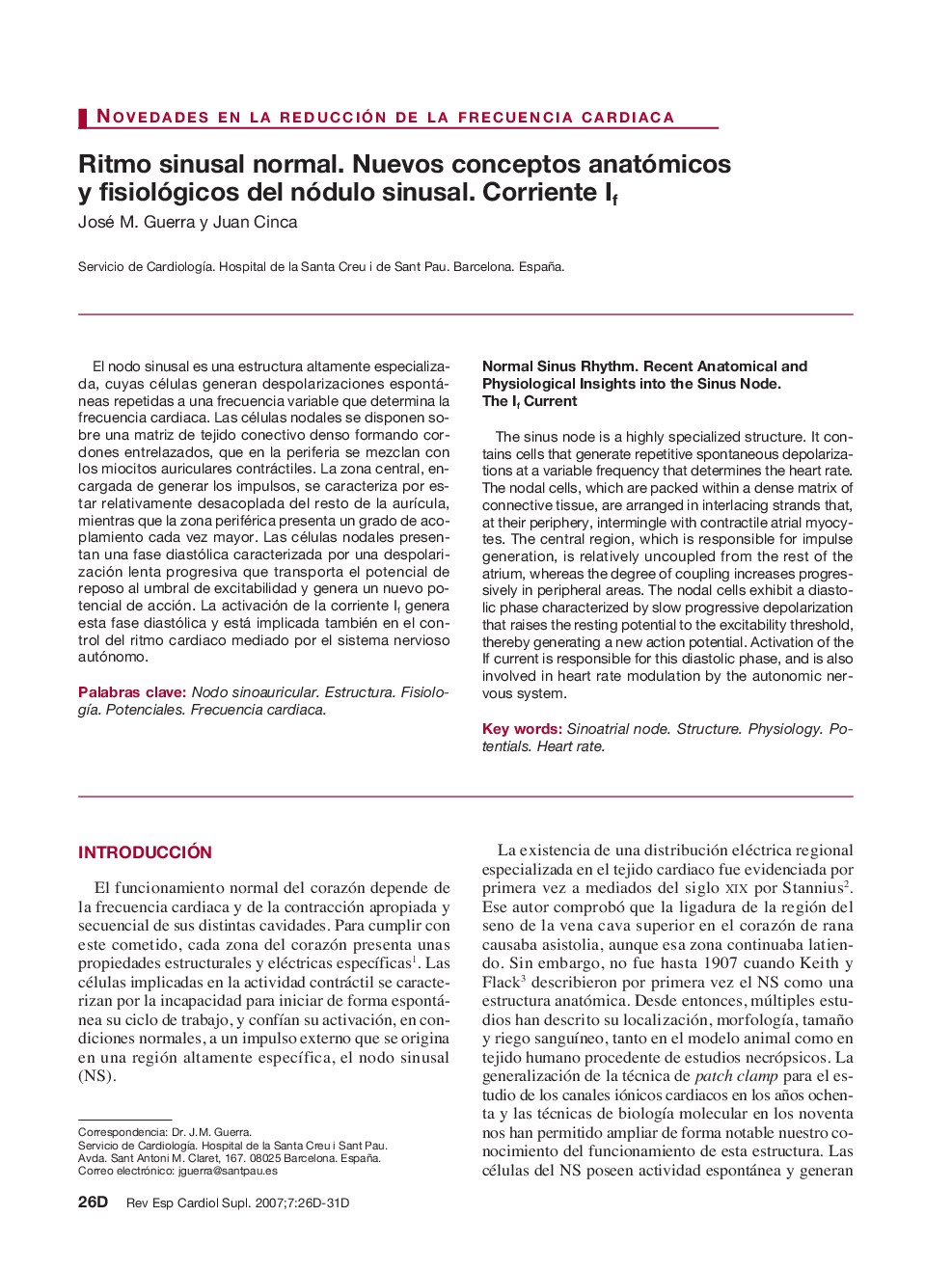| Article ID | Journal | Published Year | Pages | File Type |
|---|---|---|---|---|
| 3019697 | Revista Española de Cardiología Suplementos | 2007 | 6 Pages |
Abstract
The sinus node is a highly specialized structure. It contains cells that generate repetitive spontaneous depolarizations at a variable frequency that determines the heart rate. The nodal cells, which are packed within a dense matrix of connective tissue, are arranged in interlacing strands that, at their periphery, intermingle with contractile atrial myocytes. The central region, which is responsible for impulse generation, is relatively uncoupled from the rest of the atrium, whereas the degree of coupling increases progressively in peripheral areas. The nodal cells exhibit a diastolic phase characterized by slow progressive depolarization that raises the resting potential to the excitability threshold, thereby generating a new action potential. Activation of the If current is responsible for this diastolic phase, and is also involved in heart rate modulation by the autonomic nervous system.
Keywords
Related Topics
Health Sciences
Medicine and Dentistry
Cardiology and Cardiovascular Medicine
Authors
José M. Guerra, Juan Cinca,
